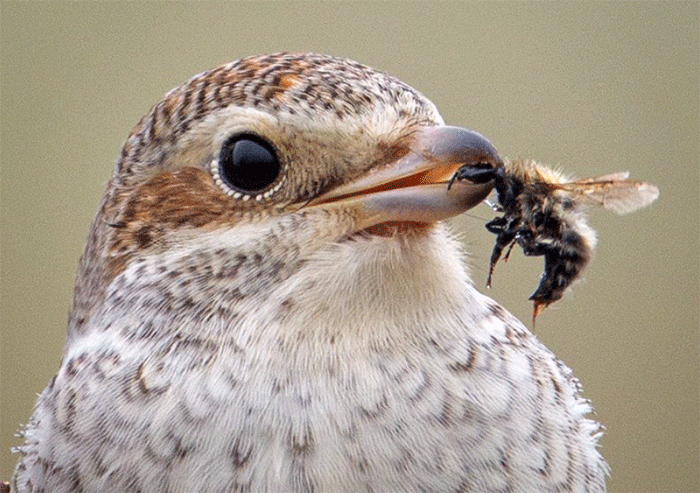Europe's Insect-Eating Birds Reveal a Hidden Crisis in the Food Chain
New research shows that beetles and grasshoppers underpin bird diets – and their decline could spell disaster for species already in trouble.

Feeding connections at risk
Europe’s birds are starving from the bottom up. A new study in Biological Conservation by Klaus Birkhofer and colleagues at Lund University and Brandenburg University of Technology reveals that insect-eating birds rely heavily on just a few key groups of arthropods – and that those same insects are among the most threatened by modern farming, pesticides and habitat loss. The findings underscore how the collapse of insect populations is rippling through Europe’s ecosystems, quietly reshaping the food web that sustains both common and declining bird species.
Beetles and flies top the menu
By analysing data from 307 studies covering 94 European insectivorous bird species, the researchers identified 24 main groups of arthropod prey. Three of them – beetles (Coleoptera), flies (Diptera) and grasshoppers and crickets (Orthoptera) – made up more than half of all prey items consumed. Spiders (Arachnida), butterflies and moths (Lepidoptera), and ants and wasps (Hymenoptera) were also common in many diets. But the balance of these prey types varied strongly depending on a bird’s taxonomic group, its habitat, and its conservation status.
Taxonomy shapes taste
Bird order proved the strongest predictor of diet composition. Waterfowl such as ducks and geese (Anseriformes) mainly consumed aquatic crustaceans, while woodpeckers (Piciformes) and birds of prey such as falcons and owls relied heavily on beetles and grasshoppers. Passerines – which include most of Europe’s songbirds – stood apart for their broad and flexible diets, taking spiders and caterpillars in significant numbers. Yet even within these adaptable groups, many species showed narrow preferences, potentially exposing them to risk if their favoured prey continues to disappear.
Habitat determines what’s on offer
The birds’ surroundings had a major influence on what they ate. Forest species consumed more spiders and caterpillars, while those around inland waters fed heavily on flies. In open farmland, towns, and semi-natural grasslands, beetles dominated diets. The researchers warn that as agricultural intensification and pesticide use drive beetle declines, the ripple effects will hit both specialist predators and generalists raising chicks in landscapes already depleted of insect life.
Declining birds depend on disappearing prey
Perhaps most worrying was the close link between diet and conservation status. Birds with declining populations and those classed as of European conservation concern depended disproportionately on beetles and grasshoppers. By contrast, species with stable or increasing populations ate more spiders and moths. The study suggests that ongoing declines in beetles – including ground beetles, rove beetles and water beetles – are cascading up the food chain, contributing to the loss of many once-common insectivores.
Insecticides and land-use change at the root
Anthropogenic impacts such as insecticide use, fertiliser-driven habitat simplification, and pollution were highlighted as key drivers of prey decline. “Beetles and spiders are integral to agricultural and forest ecosystems, yet they are also the most heavily affected by intensive land use,” the authors write. “Their loss has direct consequences for birds by reducing food availability across multiple habitats.” Even broad-spectrum insecticides used in forestry were found to diminish spider numbers, threatening forest birds that rely on them to feed chicks.
The importance of prey diversity
Species of global conservation concern – those rarest on the Red List – showed the lowest diversity of prey taxa overall. This makes them especially vulnerable to losses among specific insect groups. The authors argue that conservation measures must recognise these indirect food-chain dependencies. Protecting beetles, flies and spiders is, in effect, protecting the birds that depend on them. Measures such as reduced pesticide use, maintaining grassland mosaics, and retaining deadwood and wet areas can all help sustain arthropod diversity for avian consumers.
Looking ahead
The team calls for greater integration of insect conservation into bird protection policies, noting that the two crises are inseparable. New molecular tools such as DNA metabarcoding are opening the door to detailed studies of bird diets, revealing how habitat and prey diversity shift with land use. Such insights, the authors say, will be essential for designing landscapes that can feed both birds and biodiversity as a whole.
October 2025
Read the full paper here
Get Breaking Birdnews First
Get all the latest breaking bird news as it happens, download BirdAlertPRO for a 30-day free trial. No payment details required and get exclusive first-time subscriber offers.
Share this story







